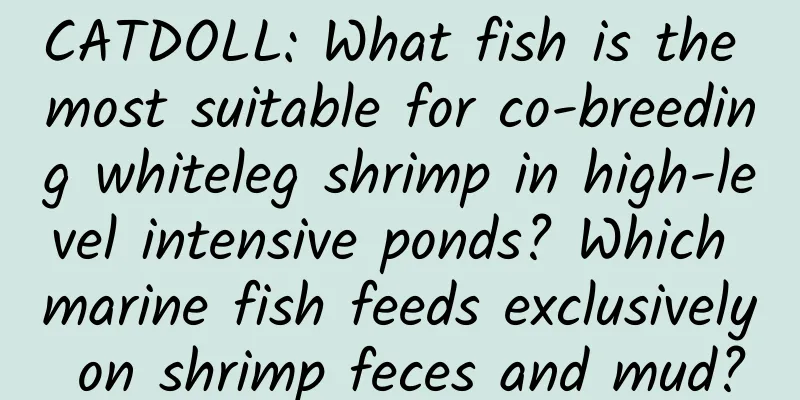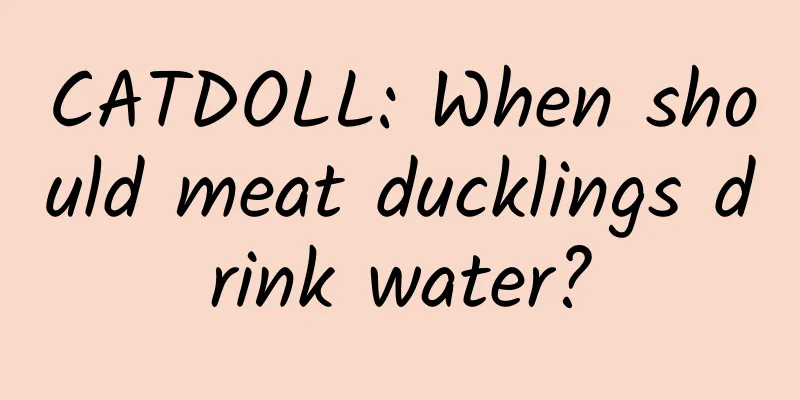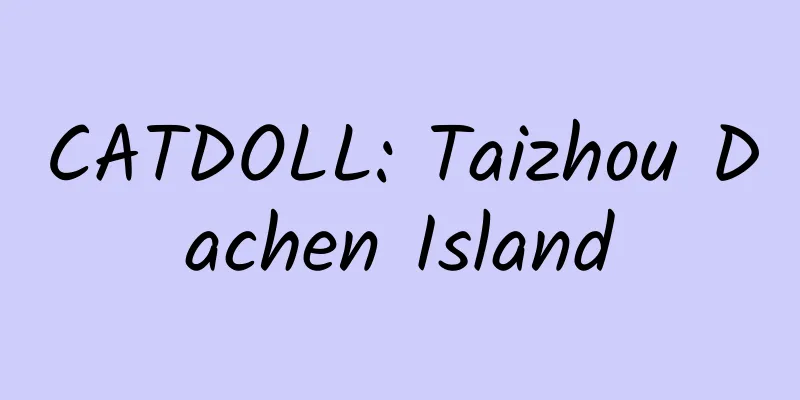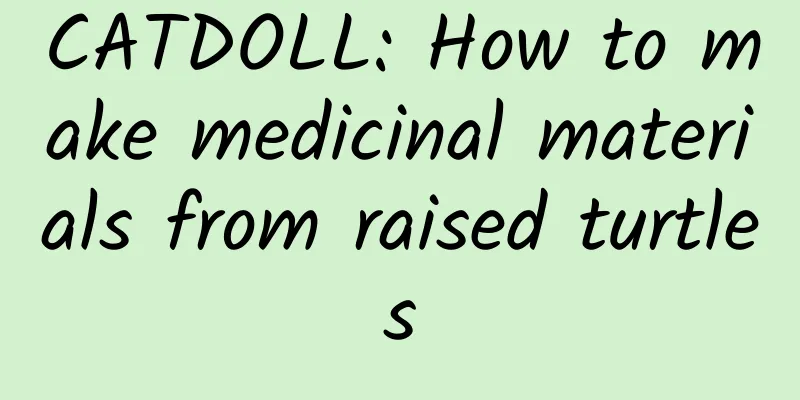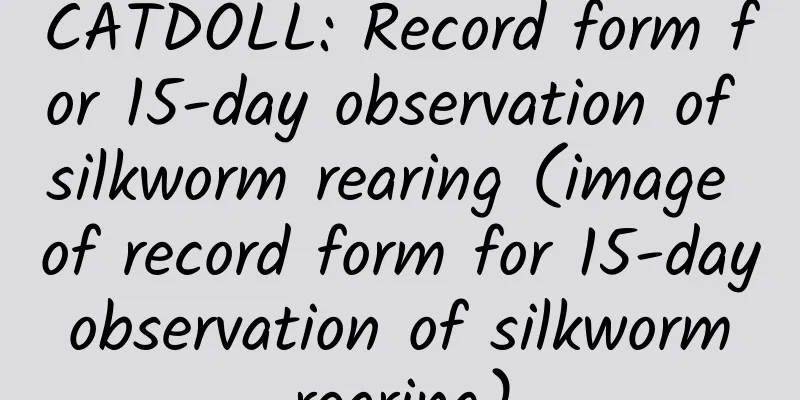CATDOLL : CATDOLL: How to prevent diseases in ornamental fish?
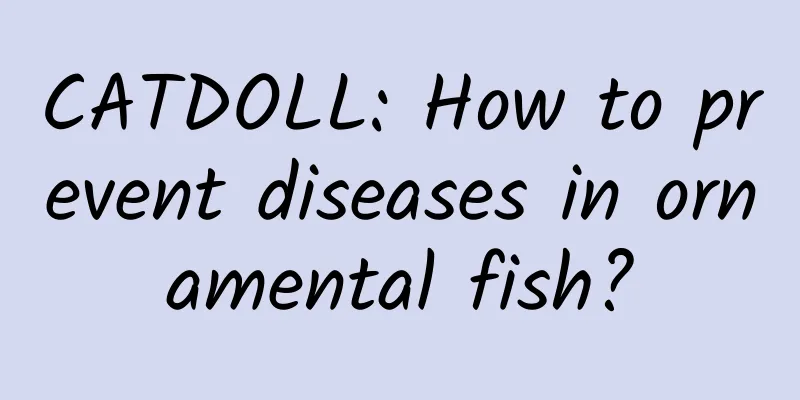
|
Diseases found: decreased appetite, abnormal swimming posture or loss of balance, fading body color... Internal diseases: Pathogens will settle in the fish body, and then attack organs and blood vessels, which are more difficult to detect. External diseases: Usually occur on the surface of the skin, especially the fins and gills, which are generally easier to find. *Common diseases, diagnosis and treatment of ornamental fish White spot disease symptoms: Initial restlessness, fin retraction, loss of appetite, and in severe cases, the whole body is covered with white spots Cause: Weather, rainfall, water changes, and changes in water temperature cause single-cell white spot ciliates Treatment: White spot disease treatment agent + salt, change 1/3 of the water, remove activated carbon, and slightly increase the temperature Rotten meat, rotten gills Symptoms: Fish fins, gills, tails, like torn, abrasions, white mold attached to the tail end of the fin Cause: Unsuitable water quality, fin rot bacteria Treatment: Universal water + mold treatment agent + salt, change 1/3 of the water, remove activated carbon, and slightly increase the temperature Trauma, abrasions Symptoms: Fish skin and gills have obvious redness and swelling, trauma, rapid breathing, etc. Cause: Fish transportation, collision, Treatment caused by fighting: universal water + salt + bacterial medication, change 1/3 of the water, take out the activated carbon, and slightly increase the temperature. Symptoms of external parasites: most parasites are on the gills or the surface of the fish body, breathing difficulties, slower swimming, and reduced food intake. Causes: fish lice, wheel worms, nematodes, and pinworms. Treatment: external parasites + salt, change 1/3 of the water, take out the activated carbon, and improve the breeding environment. Symptoms of internal parasites: inactivity, malnutrition, anemia, black body color, loss of appetite. Causes: protozoa and hexaflagellates. Treatment: protozoa + salt, change 1/3 of the water, take out the activated carbon, and slightly increase the temperature. Symptoms of head hole disease: blackening of the rainbow, perforation and ulcers on the head of the cichlid (blood parrot). Cause: hexaflagellates. Treatment: protozoa + salt, change 1/3 of the water, take out the activated carbon, and slightly increase the temperature. Once the fish become ill, the first thing to do is to isolate and treat them. At the same time, the original fish tank also needs to be disinfected. Use drugs and treatment. Generally, suitable drugs can restore the fish to health after 3 to 5 days of treatment. Remember to turn off the lighting, increase dissolved oxygen with air pump and stop feeding when taking a drug bath, which will have a better effect. Drug bath treatment: suitable for serious disease, change 1/3 of the water and add drugs, take out the activated carbon, and repeat it once after 48 hours until improvement. Quick treatment: suitable for mild disease, change 1/3 of the water and add "double" drugs, put activated carbon, and repeat it once after 24 hours until improvement. Drugs and precautions 1. Furacilin (C6H6O4N4) Furacilin is also known as furanxin. It is a lemon yellow crystalline powder, odorless, bitter, and only slightly soluble in water. It has a strong killing power against Gram-negative bacteria, and bacteria do not develop drug resistance to this drug. It is a commonly used drug for the treatment of bacterial diseases. 2. Copper sulfate (CUSO4*5H2O) Copper sulfate is also known as blue vitriol and gall vitriol. It contains 5 molecules of crystal water. It is a transparent dark blue crystal or powder. It loses water in the air and turns white. It can turn blue again after absorbing moisture. If it is too humid, it can also deliquesce, but it does not affect the efficacy. Copper sulfate is easily soluble in water. The aqueous solution is weakly acidic. It has astringent effect and strong ability to kill pathogens. The size of its sterilization ability is often affected by various factors in the water. Therefore, the dosage needs to be flexibly controlled according to the specific situation. It is generally believed that the more organic matter in the pool water, the lower the water temperature, and the higher the pH value, the less toxic the copper sulfate is, and the greater the safe concentration. The higher the water temperature, the lower the pH value, and the less organic matter, the greater the toxicity of copper sulfate and the lower the safe concentration. Copper sulfate can kill a variety of protozoa and fleas that parasitize the outside of the fish body, and is a commonly used external medicine. However, due to residual toxicity (copper can remain in the gills or gills, muscles, liver, and kidney tissues of fish) and affects the feeding and growth of fish, it cannot be used frequently. In addition, the safe concentration range of copper sulfate is relatively small, and the water body should be accurately measured when used. The temperature of the water dissolving copper sulfate should not exceed 60°C, otherwise it will easily become ineffective. 3. Ferrous sulfate (FESO4*7H2O) Also known as green vitriol and iron vitriol, it contains 7 crystal water molecules. It is a transparent, light green crystal or powder, odorless, astringent, and easily weathered in dry air. It is easily oxidized and hydrolyzed in humid air to produce yellow-brown insoluble basic iron sulfate, which has no medicinal value. Therefore, it should be sealed and moisture-proof for storage. Ferrous sulfate is an auxiliary drug with astringent effect. It is mainly used to remove obstacles for drugs such as copper sulfate to kill parasites. 4. Trichlorfon (C4H8CL3O4P) The chemical name of this drug is 0,0-dimethyl (2,2,2-trichloro-1-hydroxyethyl) phosphate, which is a highly efficient and low-toxic organophosphorus insecticide widely used in agriculture, animal husbandry, and health. It is relatively soluble in water. It is stable under acidic conditions and can be quickly decomposed into more toxic dichlorvos under alkaline conditions, and continue to decompose until it has no killing activity. Trichlorfon powder can be used for fish disease prevention and control in Tuanshan. The active ingredients are in different specifications such as 2.5%, 4%, 25%, and 50%. The commonly used one is 90% crystal. Trichlorfon is an effective insecticide with low toxicity, low residue, and short residual time. Its mechanism of action is that the organophosphorus binds to the cholinesterase that controls the normal transmission of nerve impulses, inhibits the activity of cholinesterase, and loses the ability to decompose acetylcholine. Due to the accumulation of acetylcholine in nerve cells, the nerve transmission function is terminated, resulting in poisoning and death of insects and crustaceans. In the prevention and control of fish diseases, trichlorfon is widely used to prevent and control fish diseases caused by crustaceans and parasitic worm diseases outside and inside the fish. 5. Potassium permanganate (KMNO4) This product is purple-black slender crystals, opaque, with a blue metallic luster, odorless, and easily soluble in water. It is a strong oxidant. When it meets with organic matter, it releases oxygen and oxidizes the organic matter, so it has strong bactericidal power, and it is reduced to manganese dioxide. Manganese dioxide can combine with protein to form a complex of protein salts, so it has a convergence effect at low concentrations, and has irritation and corrosion at high concentrations. In fish disease prevention and control, it is used to prevent trichodinasis, ringworm disease and anchor fish disease. 6. Sodium chloride (NACL) is table salt. In fish disease prevention and control, its osmotic effect is used to kill some protozoa and microorganisms of external parasites. 7. Copper chloride (CUCL2) is a blue powder that can be dissolved in water. Its chemical properties are less affected by organic matter than copper sulfate. It is used to kill Lymnaea snails and prevent schistosomiasis and schistosomiasis. The dosage must be accurately calculated. A slight excess can cause fish poisoning and death. 8. Malachite green (C23H25N2CL) Also known as malachite green and benzaldehyde green, it is a lustrous emerald green crystal belonging to the triphenylmethane dye. Malachite green is a type of medicinal dye with strong antibacterial effect and is soluble in water. It is used to prevent and treat fish diseases such as Saprolegniasis and Ichthyophthirius, with good results. Malachite green is a photosensitive drug, and its toxicity increases with the increase of light intensity. Therefore, it should be noted that it should not be used during the day when the sun is strong. At the same time, the pH value of the pool water is above 9 and the desired effect cannot be obtained. It cannot come into contact with zinc or tinplate utensils to avoid acute poisoning of fish due to zinc dissolution. Malachite green cannot stick to human skin, let alone enter the mouth. Malachite green can cause mild inflammation of the gills and skin epithelial cells of fish; it can cause mild dilation of the lumen of the renal tubules and the nuclei of the renal tubular wall cells; more importantly, it affects the enzymes in the fish intestines, reducing the secretion of enzymes, thereby affecting the fish's feeding and growth, so it cannot be used frequently. 9. Sulfadiazine is referred to as SD. It is a white or slightly yellow crystalline powder, odorless and tasteless, insoluble in water, stable in the air, and its color can gradually darken when exposed to sunlight. It should be stored in a sealed container away from light. It is an oral medicine, completely absorbed, and the body excretes it slowly. The effective concentration can be maintained for a long time, and the side effects and toxicity are small. It is used to treat enteritis and red skin disease in fish disease prevention and control. 10. Furazolidone is also known as Furazolidone. It is a yellow crystal, odorless, and extremely insoluble in water. It has a broad-spectrum antibacterial effect and antiprotozoal effect. It rarely produces drug resistance, has low toxicity, and has no side effects. It is mainly used to treat intestinal infections and can be sprayed all over the pond to prevent and treat white head and white mouth disease and gill rot. 11. Chlortetracycline hydrochloride is a golden yellow crystalline powder, odorless and bitter. It is stable in the air, easily deteriorates when exposed to light, and quickly loses its effectiveness in alkaline solutions. It should not be in contact with metals and should be refrigerated. It has a wide range of antibacterial spectrum, and its main function is to inhibit bacteria. It has a bactericidal effect at high concentrations. Individuals who use the drug may develop drug resistance, but it is generally not high. It is used to prevent and treat white skin disease, rotten skin disease, etc. in fish disease prevention and control. 12. Oxytetracycline hydrochloride is also known as chlortetracycline hydrochloride. It is a yellow crystalline powder, odorless, bitter, stable, easily soluble in water, and decomposes and loses its effectiveness in alkaline conditions. The antibacterial spectrum is similar to that of chlortetracycline hydrochloride, with low toxicity, and drug resistance can also be developed, but very slowly. It is the same as chlortetracycline hydrochloride in fish disease prevention and control. 13. Penicillin is also known as penicillin. Penicillin salt is a light yellow powder that is easily soluble in water. It is extremely unstable and can be quickly decomposed by heating, light, or adding acid or alkali. Therefore, the validity period should be noted. The antibacterial spectrum of penicillin is not as broad as that of sulfonamides, and it has strict selectivity for bacterial effects. It mainly acts on Gram-positive bacteria and some Gram-negative bacteria. It has an antibacterial effect at low concentrations and a bactericidal effect at high concentrations. In fish disease prevention and control, it is mainly used to splash into the water during the transportation of broodstock to prevent the water quality from deteriorating during transportation. It is injected intramuscularly for postpartum broodstock to prevent bacterial infections. 14. Erythromycin This product is a light yellow crystalline powder, odorless, and bitter. It is hygroscopic in the air and difficult to dissolve in water. Erythromycin is alkaline, and its solubility in water is greatly increased after it is combined with organic acids to form salts. This product is relatively stable in a dry state and easily loses its effectiveness in aqueous solutions. It is unstable when it encounters acid, and its effectiveness is significantly reduced below a pH value of 4. The aqueous solution should be refrigerated and will gradually lose its effectiveness at room temperature. Erythromycin has a stronger effect on Gram-positive bacteria than on Gram-negative bacteria. Bacteria quickly develop resistance to this product, but it is not persistent, and sensitivity can still be restored after stopping the drug for 3-6 months. In terms of fish disease prevention and control, it can prevent and treat white mouth disease and gill rot disease. Summer is the peak season for the growth and development of ornamental fish, including goldfish, tropical fish and koi. In summer, ornamental fish are active and rarely get sick. However, when the air temperature is as high as 37-38°C, the water temperature is often as high as 30 degrees Celsius. At this time, we must be particularly vigilant against the two major threats of hypoxia and tail scalding. To prevent heatstroke and lower the temperature, the main measure is to deepen the water level to 35-40 cm. Ornamental fish can dive into the lower temperature deep layer and try to keep the water temperature below 30 degrees Celsius. Thoroughly cleaning, frequently changing water and covering with shade nets or reed curtains can slow down the rise in water temperature, maintain a high level of dissolved oxygen in the water and inhibit the massive reproduction of phytoplankton. These are effective ways to prevent ornamental fish from floating and tail scalding. After rainfall, even if the original pool water is not too old, the water must be completely changed. Because rainwater falls into the surface of the fish pond, its temperature is lower than that of the water before the rain. The low-temperature water will flow to the bottom layer of the pond, and the high-temperature water at the bottom of the pond will rise. In this way, the convection between the upper and lower parts will cause the dirt in the pond to churn up and down, speeding up the decomposition speed and deteriorating the water quality. In serious cases, the fish will float or suffocate. At this time, the appetite of ornamental fish is very strong, so be careful not to feed them too much. The fish worms caught in summer are more likely to die. The fish worms that have just died but have not smelled or deteriorated can still be used to feed healthy ornamental fish of 1-2 years old. The dead worms should be fed first and then the live worms. Otherwise, the ornamental fish will eat the live worms and leave the dead worms in the water, which will inevitably damage the water quality. Fish diseases in summer are slightly less than those in spring and autumn. At this time, the fish gradually grow up and their disease resistance is enhanced. Therefore, parasitic diseases such as ciliates and flagellates gradually decrease. Summer is also the season for fish diseases. If you find that the fish are lazy and eat less, stay away from the group, the fish fins are stiff and shrinking, or the fish have white spots, white films, red spots, and ulcers, they should be isolated and treated in time. Some microbial diseases that occurred in spring will continue in summer, such as gill rot, hemorrhagic disease, enteritis, and printing disease. In addition, parasitic diseases such as anchor mullet disease and Chinese mullet disease are also more common at this time. In midsummer, high-yield fish ponds are prone to flooding, mainly due to high water temperature and lack of oxygen. Similarly, home fish farming also faces the same problem. At the same time, the containers for home fish farming are relatively small, making the above diseases more likely to occur. |
<<: CATDOLL: Which is more expensive, black carp or grass carp?
>>: CATDOLL: How to transport turbot over long distances
Recommend
CATDOLL: Is the Ghanaian giant tiger snail poisonous?
Is the Ghanaian giant tiger snail poisonous? Snai...
How to deal with urination and defecation when driving with a cat
To solve the problem of urination and defecation ...
CATDOLL: Treatment and prevention measures for piglet flatulence and diarrhea
Treatment of bloating and diarrhea in piglets Blo...
CATDOLL: Which salinity or temperature is more suitable for clams farming?
1. Which salinity or temperature is suitable for ...
CATDOLL: Uncovering the causes and solutions of sow internal burning
What is sow burning? Sow internal fever refers to...
CATDOLL: Is the centipede farming in Wuhan a scam?
1. Is the centipede farming in Wuhan a scam? It i...
CATDOLL: Where can I learn red worm breeding technology (Red worm breeding technology training center)
1. How to breed red worms? Step/Method 1 When bre...
CATDOLL: How much does it cost to raise frogs on 10 acres of land?
1. How much does it cost to raise frogs on 10 acr...
CATDOLL: Why are there so many little frogs on the streets? Is it related to the earthquake?
1. Why are there so many little frogs on the stre...
CATDOLL: How to raise grasshoppers in one acre of land with several greenhouses, with breeding methods
How many greenhouses are there to raise grasshopp...
CATDOLL: What is the method for artificially breeding natural queen cells of bees?
Under natural conditions in a bee colony, when th...
CATDOLL: What are the detailed steps for hatching grass carp fry?
1) From the hatching of the bridging membrane to ...
CATDOLL: Black ant breeding technology,
1. Black ant breeding technology, Ants should be ...
CATDOLL: What to do if Cosmos is infested with insects
1. What should I do if the cosmos is infested wit...
CATDOLL: How to deal with fish feces in the fish tank?
How to deal with fish feces in the fish tank? Whe...



